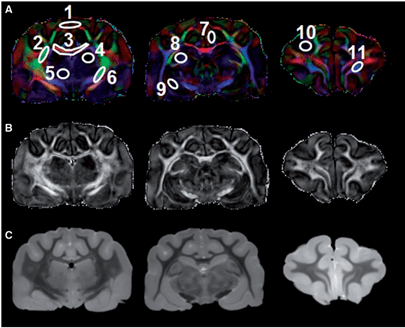Grey matter may be the most explored and discussed part of the brain, as it is involved in “muscle control and sensory perception, such as seeing and hearing, memory, emotions, speech, decision making, and self-control.” Additionally, grey matter refers to the cells that are on the surface of the brain and, therefore, most associated with it. Grey matter, however, is only half of the story – found inside the brain is the other half, white matter. Until recently, white matter was simply thought to control the brain’s executive functioning. While executive functions are definitely necessary, research within the past decade has found, “the role of the brain’s white matter in active learning and memory may be underestimated.” In particular, its role in spatial memory, the memory one uses to return to rewarding locations, may be underestimated. “Learning a new skill is [also] associated with altered white matter structure in mature brains.”
White matter gets its color from its coating with myelin. Myelin, “allows electrical impulses to transmit quickly and efficiently along the nerve cells.” Demyelination is the death of brain axons, nerve fibers in the brain that conduct electrical impulses away from the neuron’s cell body. Neurological disorders are known to induce white matter dysfunction and demyelination. For example, ischemic strokes, which involve the narrowing or blocking of arteries to the brain and accounts for 80 percent of strokes, are associated with the death of white matter and demyelination.
To prevent this demyelination, medical professionals use recombinant tissue plasminogen activator [rtPA], “a form of tissue plasminogen activator that is made in the laboratory… [and] helps dissolve blood clots.” (tPA is, “an enzyme made in the body that helps dissolve blood clots.”) In 1996, rtPA was approved by the FDA to treat stroke patients and it is now also used to treat heart attacks and clots in the lungs. Brain injury can cause demyelination, as it is described as damage to myelin around nerves. Given the previous success with rtPA, government-funded studies are now looking to see if it can help repair white matter following a brain injury.
The first study related to white matter damage and cognitive impairment following brain injury occurred in 2011 and found that, “white matter disruption is an important determinant of cognitive impairment after brain injury.” Given this result, it is surprise that I cannot find another study on the topic until now. This study, which was published on September 25, 2018, evaluated through electrophysiology the white matter in mice after a brain injury and then after treatment for that brain injury with tPA or rtPA. Conducted at the public University of Pittsburgh, the Albert Einstein College of Medicine and at the Veterans Administration laboratory, the scientists found that tPA improved long-term special memory. Specifically, “rtPA treatment makes up for a lack of endogenous tPA and prevents long-term demyelination.”
This scientific finding related to brain cell stability and cell regeneration is important. However, recovery is never that easy. “There are conflicting reports of harmful versus neuroprotective effects of tPA in acute brain injury models,“ states the NIH report. Though a thorough Google search found no studies that found harmful effects, a Google search is far from a professional medical search. A new, more neurologically-complete recovery from brain injury could soon be available.

